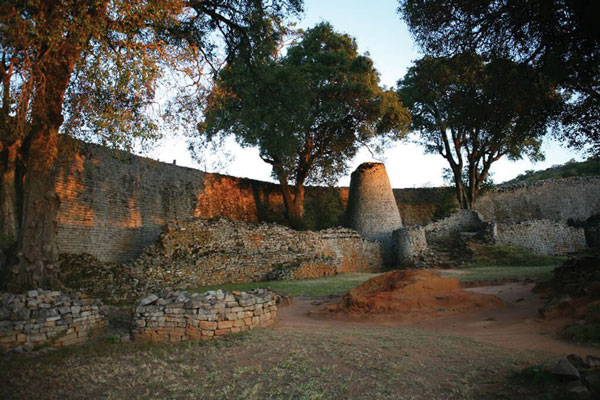
Thomas Chidamba
ZIMBABWE is endowed with an avalanche of cultural heritage. These cultural paraphernalia are in the form of objects, usually called artefacts that can be as small as pottery or as large as monuments that are evidence of past cultures. These artefacts serve as a physical connection to our past. Hence, these archaeological evidence, together with documentation, assist archaeologists gain a better understanding of past human behaviour. As such, archaeology plays an important role in helping us understand how and why human behaviour change over time.
Why is archaeology important?
Archaeology is the study of past human behaviour through the systematic recovery and analysis of material remains and documents. In this regard, archaeologists search for patterns in the evolution of significant cultural events such as the development of farming, the emergence of cities, and the collapse of major civilisations for clues on why these events occurred. Ultimately, they search for ways to better predict how cultures change, including our own, and how to better plan for the future.
Today, our culture seems to document everything through books, newspapers, television, and the internet. However, there is a difference between what is written and what people actually do. Modern media often put a “spin” on a story that reflects an editorial bias on what has taken place. Although the written record may be useful, it is biased according to the beliefs and mistakes of those who produced it. Archaeology frequently provides a more objective account of our past than the historic record alone.
Our past is our cultural heritage, and how we choose to use this information for future generations is an important role for archaeologists. Understanding patterns and changes in human behaviour enhances our knowledge of the past. It aids us in planning, not only our future, but for generations to come. Many people believe that public archaeology is critical to understanding, protecting, and celebrating our rich and diverse cultural heritage. It is high time archaeologists recognised the importance of this role and start developing various mechanisms of media outreach, publications, internet, and public programmes, to publicise the contributions of archaeology. This is because archaeological remains give us a valuable insight into our ancestors’ lives as they provide concrete evidence, sometimes the only evidence, of thousands of years of human activity and settlement. This is why protecting and preserving these fascinating artefacts is important.
Appropriation of archaeological heritage in Zimbabwe
Archaeological heritage has been appropriated in various contexts to create national, partisan and sometimes corporate identities in independent Zimbabwe. This has resulted in archaeological heritage being used in national, partisan and corporate contexts because material culture of the past are a major source of inspiration for national, partisan and corporate institutions which are proud of the symbolic asset of archaeological artefacts and heritage sites. Therefore, heritage, in its various facets, natural or cultural, is fundamental in the construction of national identity because it gives a sense of antiquity.
- Chamisa under fire over US$120K donation
- Mavhunga puts DeMbare into Chibuku quarterfinals
- Pension funds bet on Cabora Bassa oilfields
- Councils defy govt fire tender directive
Keep Reading
Renaming of the country
The name Zimbabwe stems from a Shona term for Great Zimbabwe — Dzimbadzemabwe, an ancient city in Masvingo province. The country was formerly known as Rhodesia, named after colonialists leader Cecil John Rhodes, the Briton who led the Pioneer Column and established British rule in southern Africa. When the country got independence, albeit through a protracted war of liberation, there was need to dump the name of a coloniser who had committed worst atrocities on indigenous people, and come up with a local name. Zimbabwe was unanimously agreed as the new name of the country taken from the inspirational Great Zimbabwe monument, a 12th-16th century archaeological site that played a pivotal role in shaping the post-colonial national identity. Great Zimbabwe is one of the most stunning historical monuments in Africa. The monument creates a breath-taking view, leaving visitors to wonder about the historical events that transpired centuries ago. How these massive stone structures were built, what kind of society lived there, why was such an impressive and durable structure abandoned?
To the leaders of independent Zimbabwe, Great Zimbabwe was a source of black cultural pride and inspiration, historical and political consciousness. According to Thondhlana and others (2021) Great Zimbabwe demonstrated ancient African achievements and was, thus, a source of inspiration for Zimbabweans who are supposed to emulate the enterprising spirit of their ancestors who constructed a politically and economically successful king. Therefore, Great Zimbabwe became a launchpad for establishing a monumental post-colonial national identity that created a sense of continuity between modern Zimbabwe and ancient Great Zimbabwe.
The Zimbabwe Bird
One of the notable artefacts discovered to date is the Zimbabwe Bird. The Zimbabwe Bird, carved from soapstone, has become another valuable national treasure used to create national identity.
The Zimbabwe Bird, which represents sacred or totemic animals of the indigenous people, after independence, became a national emblem and was incorporated into the national flag as a symbol of sovereign nationhood. The iconic bird is also part of the official logo for the opposition MDC party.
The Zimbabwe Bird or Bateleur eagle or Chapungu was believed to be a messenger bird from Mwari (God) and the ancestors. The stone-carved Zimbabwe Bird, as a national emblem, appears on the national flag and coat of arms and on banknotes and coins.
The Conical Tower
The Conical Tower, in the great enclosure at the Great Zimbabwe monument has been adopted as a symbol for national pride. The tower has been interpreted by archaeologists as a symbol of grain storage, authority and male fertility. The Conical Tower, before it was disturbed by the colonialists, had a ring at the top. The structure of the Conical Tower is broad at the base and tapers as it gains height and at the base there are two smaller towers on either side. This has been interpreted by some archaeologists to resemble a circumcised male sexual organ. Hence, it is a symbol for male fertility.
The Conical Tower is regarded as the foundation of the post-independence State and has been used by different national, political parties and corporate institutions that reproduce national symbols and archaeological artefacts. Zanu PF adopted the Conical Tower as the official party symbol.
Conclusion
Heritage is a contingent social and cultural process that has been used extensively in the construction and legitimisation of nations. Heritage discourse, by attributing specific cultural significance to material remains, creates a homogenising version of national history.
Therefore, heritage has played a pivotal role in the processes of post-independence State- and nation-building as the attainment of independence promoted elaboration of past African cultures.











